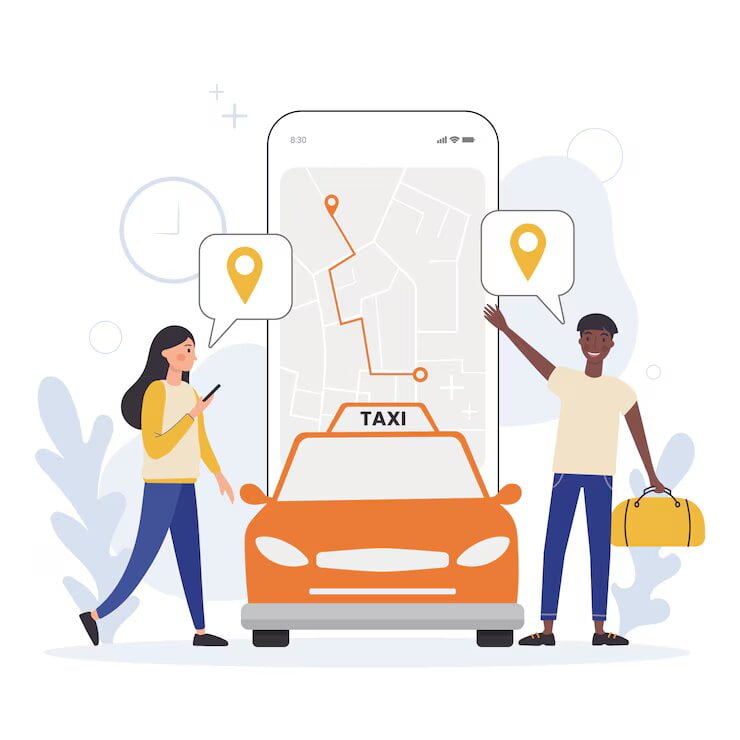Creating an Uber clone app can be a lucrative venture in the rapidly evolving app development world. However, developers must avoid several common pitfalls to ensure their app’s success. Here, we outline the seven most critical mistakes to avoid when developing an Uber clone app in 2024.
1. Neglecting Market Research
One of the gravest errors in developing an Uber clone app is skipping thorough market research. Understanding the market landscape, identifying competitors, and recognizing customer needs are crucial. Developers must analyze the strengths and weaknesses of existing ride-hailing apps and identify gaps they can fill. Market research provides insights into user preferences, regional regulations, and potential challenges, helping to shape a robust and competitive app.
2. Ignoring Legal and Regulatory Requirements
Overlooking legal and regulatory requirements can result in severe consequences, including hefty fines and app shutdowns. Each region has specific regulations concerning ride-hailing services, such as driver background checks, insurance requirements, and fare regulations. It’s imperative to consult with legal experts to ensure full compliance with local laws and obtain all necessary permits and licenses before launching the app.
3. Inadequate Focus on User Experience (UX) Design
User experience (UX) design is a critical factor that can make or break your app. A poorly designed interface can lead to user frustration and abandonment. Investing in intuitive, user-friendly UX design ensures that users can easily navigate the app, book rides, and access features without hassle. Pay close attention to onboarding processes, ride booking flows, and payment methods to create a seamless and enjoyable user experience.
4. Poor Driver Management System
An efficient driver management system is essential for the smooth operation of an Uber clone app. Failing to implement features such as real-time driver tracking, performance monitoring, and driver incentives can lead to operational inefficiencies and driver dissatisfaction. Ensure your app includes comprehensive tools for driver onboarding, training, and communication to maintain a high standard of service.
5. Inadequate Payment Integration
A seamless payment integration is vital for the success of any ride-hailing app. Users expect various payment options, including credit/debit cards, digital wallets, and cash. Implementing secure and reliable payment gateways that support multiple currencies and payment methods enhances user convenience and trust. Ensure that your payment system complies with global security standards to protect user data and prevent fraud.
6. Overlooking Security and Privacy Measures
With the increasing number of cyber threats, security, and privacy measures cannot be ignored. Protecting user data should be a top priority. Implement robust security protocols, such as encryption, two-factor authentication, and regular security audits. Ensure your app complies with data protection regulations, such as GDPR, to safeguard user information and build trust.
7. Lack of Scalability Planning
As your app grows, so will the number of users and transactions. Failing to plan for scalability can lead to performance issues and user dissatisfaction. Ensure that your app architecture is designed to handle increased load and can scale horizontally and vertically. Use cloud services and scalable databases to accommodate growing demands without compromising performance and user experience.
Conclusion
Avoiding these common mistakes is crucial for successfully developing and operating an Uber clone app in 2024. Developers can create a competitive and user-friendly ride-hailing app by conducting thorough market research, complying with legal requirements, focusing on UX design, implementing an efficient driver management system, integrating reliable payment solutions, prioritizing security and privacy, and planning for scalability.
Frequently Asked Questions (FAQs)
1. Why is market research important for developing an Uber clone app?
Market research is vital because it helps developers understand the market landscape, identify competitors, and recognize customer needs. By analyzing existing ride-hailing app, developers can pinpoint their strengths and weaknesses, find gaps in the market, and gain insights into user preferences and regional regulations. This information shapes a robust and competitive app.
2. What legal and regulatory requirements should be considered for a ride-hailing app?
Each region has specific regulations for ride-hailing services, such as driver background checks, insurance requirements, and fare regulations. Developers should consult legal experts to ensure full compliance with local laws, obtain all necessary permits and licenses, and avoid severe consequences like fines or app shutdowns.
3. How does user experience (UX) design impact the success of a ride-hailing app?
User experience (UX) design is critical because a poorly designed interface can lead to user frustration and abandonment. Investing in intuitive, user-friendly UX design ensures users can easily navigate the app, book rides, and access features without hassle, leading to a seamless and enjoyable experience.
4. What features should be included in a driver management system for an Uber clone app?
A comprehensive driver management system should include real-time driver tracking, performance monitoring, driver incentives, onboarding tools, training modules, and communication features. These elements ensure smooth operations, maintain a high standard of service and prevent driver dissatisfaction.
5. What are the key considerations for payment integration in a ride-hailing app?
A seamless payment integration is essential and should support various payment options like credit/debit cards, digital wallets, and cash. Implementing secure and reliable payment gateways that comply with global security standards protects user data, prevents fraud, and enhances user convenience and trust.







